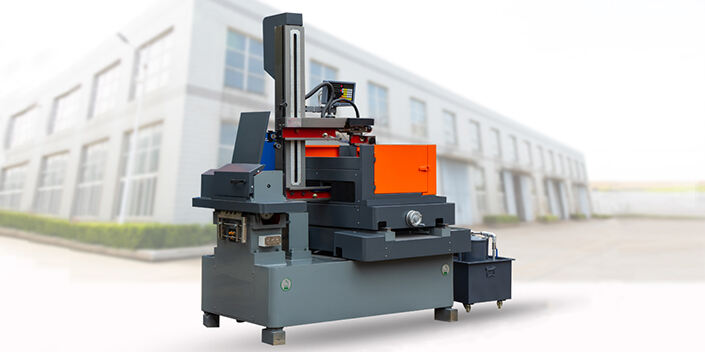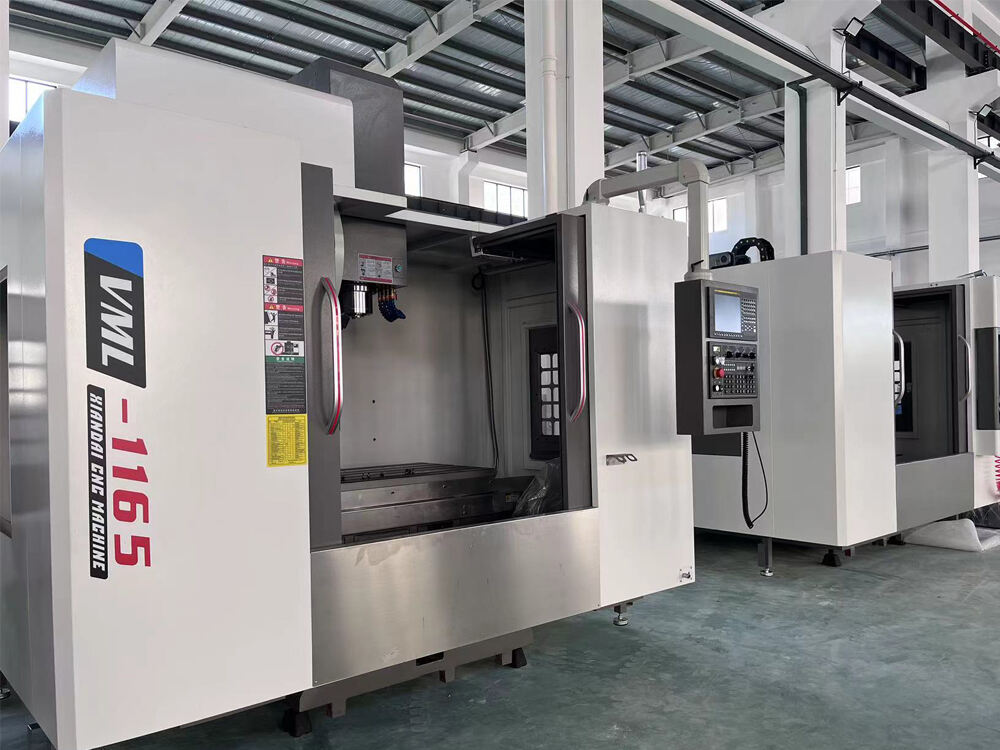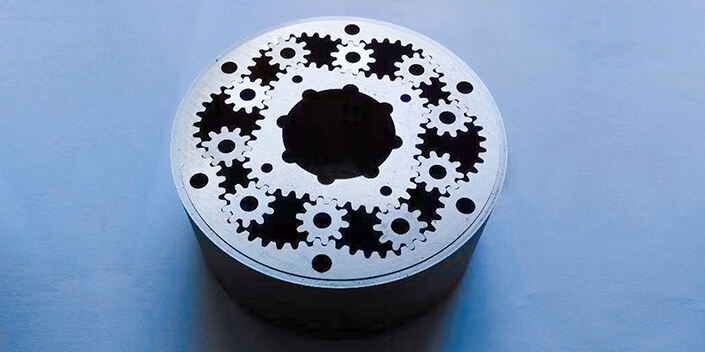Evolution of Spring Machine Models in Manufacturing
From Manual to CNC-Controlled Systems
The evolution from manual spring machines to CNC (Computer Numeric Control) systems marked a pivotal advancement in manufacturing technology. The CNC systems introduced precise automation, reducing human error and enabling consistent production quality. According to industry statistics, manufacturers experienced productivity improvements of over 30% upon adopting CNC machines, highlighting their efficiency. Major manufacturers such as Camless Spring Machines and Forming Systems were pioneers in this transition, paving the way for enhanced operational capabilities and expanded design possibilities.
Integration of Wire EDM Technology
Wire EDM technology has revolutionized spring manufacturing processes by significantly enhancing precision and efficiency. Electrical Discharge Machining allows for intricate designs with reduced cycle times, often halving production durations compared to traditional methods. This advancement not only saves time but also optimizes material usage, lowering waste and costs. With capabilities to handle diverse spring designs, wire EDM ensures each component meets strict tolerances, boosting overall reliability and performance.
Key Features of Modern Spring Machine Models
Precision Engineering with Lathe Machine Compatibility
Precision engineering is vital for the fabrication of modern spring designs, where exceptional accuracy is paramount. Lathe machines play a crucial role in achieving such precision by providing detailed control over the cutting process, ensuring springs meet exact specifications. The latest technologies in precision engineering have enabled manufacturers to achieve accuracy levels in spring fabrication that are unmatched, allowing for consistent production of high-quality springs. Customer testimonials often highlight the significance of lathe machine compatibility, emphasizing improved performance and durability in their applications. Expert opinions suggest that integrating advanced lathe machines in spring fabrication processes significantly enhances product quality and customer satisfaction.
Multi-Axis Wire Discharge Machining Capabilities
Multi-axis wire discharge machining offers advanced capabilities for crafting complex spring geometries. This technology allows manufacturers to produce intricate designs with precision, overcoming limitations encountered in simpler machining processes. The increased efficiency rates seen in manufacturing specific types of springs with multi-axis capabilities have revolutionized production speeds and cost-effectiveness. Industry trends indicate a growing adoption of multi-axis technology, driven by case studies showcasing its impact in streamlining operations and reducing waste. As a result, manufacturers can rapidly produce springs that meet stringent demands for precision and complexity.
Adaptive Coiling Mechanisms for Diverse Spring Types
Adaptive coiling mechanisms are essential for producing a wide range of spring types, offering flexibility and efficiency in manufacturing processes. Unlike traditional techniques, adaptive coiling allows for reduced time and better resource management, optimizing production cycles and minimizing material waste. Comparative analyses show that contemporary coiling mechanisms are highly adaptable in meeting customer-specific needs, ensuring springs are tailored to precise requirements in various applications. This adaptability is crucial in keeping pace with evolving market demands and fulfilling diverse spring orders with exceptional quality and reliability.
Operational Benefits for Spring Manufacturers
Enhanced Productivity Through Electrical Discharge Machining
Electrical discharge machining (EDM) significantly enhances productivity in spring manufacturing by reducing the need for human intervention. EDM processes employ precise automation, which allows for continuous operation with minimal manual oversight, thus ensuring higher efficiency levels. Statistics indicate that companies implementing EDM in their production lines have witnessed productivity improvements of up to 30% compared to traditional methods. This increase is largely due to the elimination of certain disabling processes that previously required manual handling, showcasing the transformative impact of EDM's automation capabilities in enhancing overall output in the manufacturing industry.
Material Efficiency in Wire Discharge Processes
Wire discharge machining excels in achieving material efficiency, directly influencing cost and sustainability outcomes. By utilizing wire EDM, manufacturers optimize materials, significantly reducing waste compared to conventional cutting methods. Empirical data reveals that wire discharge processes can cut material waste by up to 40%, a substantial saving that underscores its cost efficiency and environmentally-friendly footprint. As sustainability becomes a focal point for companies, the integration of wire EDM aligns businesses with both economic and ecological goals, pushing the industry towards sustainable and efficient manufacturing practices.
Reduced Downtime with Automated Systems
Automated systems are pivotal in minimizing machine downtime through predictive maintenance and continuous monitoring. These systems proactively identify and address potential issues before they result in operational halts, ensuring seamless production processes. Industries have reported notable success in downtime reduction by integrating automation, resulting in higher output and more reliable delivery schedules. For businesses investing in automated systems, the return on investment (ROI) is often reflected in substantial gains in productivity and reduced maintenance costs, making such technological advancements indispensable in modern manufacturing.
Technological Advancements in Spring Production
AI-Driven Quality Control in CNC Spring Forming
AI and machine learning are revolutionizing quality control standards in CNC spring forming. These technologies enhance product consistency by automatically detecting and correcting defects using sophisticated algorithms. For instance, AI systems can predict deformation patterns, ensuring springs remain within tolerance levels. Companies that have adopted AI have reported substantial decreases in defective products, increasing their overall efficiency and market competitiveness. As AI technologies evolve, future trends indicate a broader integration across manufacturing processes, offering more precise quality assurance capabilities.
Energy-Efficient Electrical Discharge Machining (EDM)
Modern EDM machines have undergone significant redesigns to enhance energy efficiency, setting them apart from their older counterparts. These advancements have led to reductions in energy consumption by up to 20%, translating into lower operational costs for manufacturers. For instance, manufacturers using energy-efficient EDM machines have enjoyed substantial savings on electricity bills. Beyond cost savings, these improvements contribute significantly to energy conservation efforts within the manufacturing sector. As the trend towards sustainability grows, these machines play a vital role in minimizing environmental impact while optimizing energy usage.
Future Trends in Spring Machine Development
IoT Integration for Predictive Maintenance
The integration of Internet of Things (IoT) technology in predictive maintenance for spring machines is revolutionizing the manufacturing industry. By equipping machines with IoT sensors, manufacturers can collect real-time data that helps in predicting potential failures before they occur, which significantly reduces downtime. This leads to optimized maintenance schedules and substantial cost savings by preventing unexpected breakdowns. Industry forecasts suggest a steady increase in IoT adoption rates across manufacturing contexts, as companies seek to enhance operational efficiency. According to a report by MarketsandMarkets, the IoT market in manufacturing is expected to grow at a CAGR of 13% from 2021 to 2026, underscoring the critical role of IoT in future manufacturing processes.
Hybrid Systems Combining EDM and Traditional Methods
The emergence of hybrid systems that combine Electrical Discharge Machining (EDM) with traditional manufacturing techniques offers unprecedented advantages in versatility and product quality. By integrating EDM with methods such as lathing and milling, these systems allow for greater precision in complex parts manufacturing, improving the adaptability to varied production requirements. For instance, companies transitioning to hybrid systems report enhanced flexibility and efficiency in their operations. An example is a firm utilizing both wire EDM and traditional machining methods to produce intricate components for the automotive industry, which resulted in reduced material waste and improved product quality. This trend signifies a move towards more integrated manufacturing solutions, promising substantial advancements in production capabilities.





